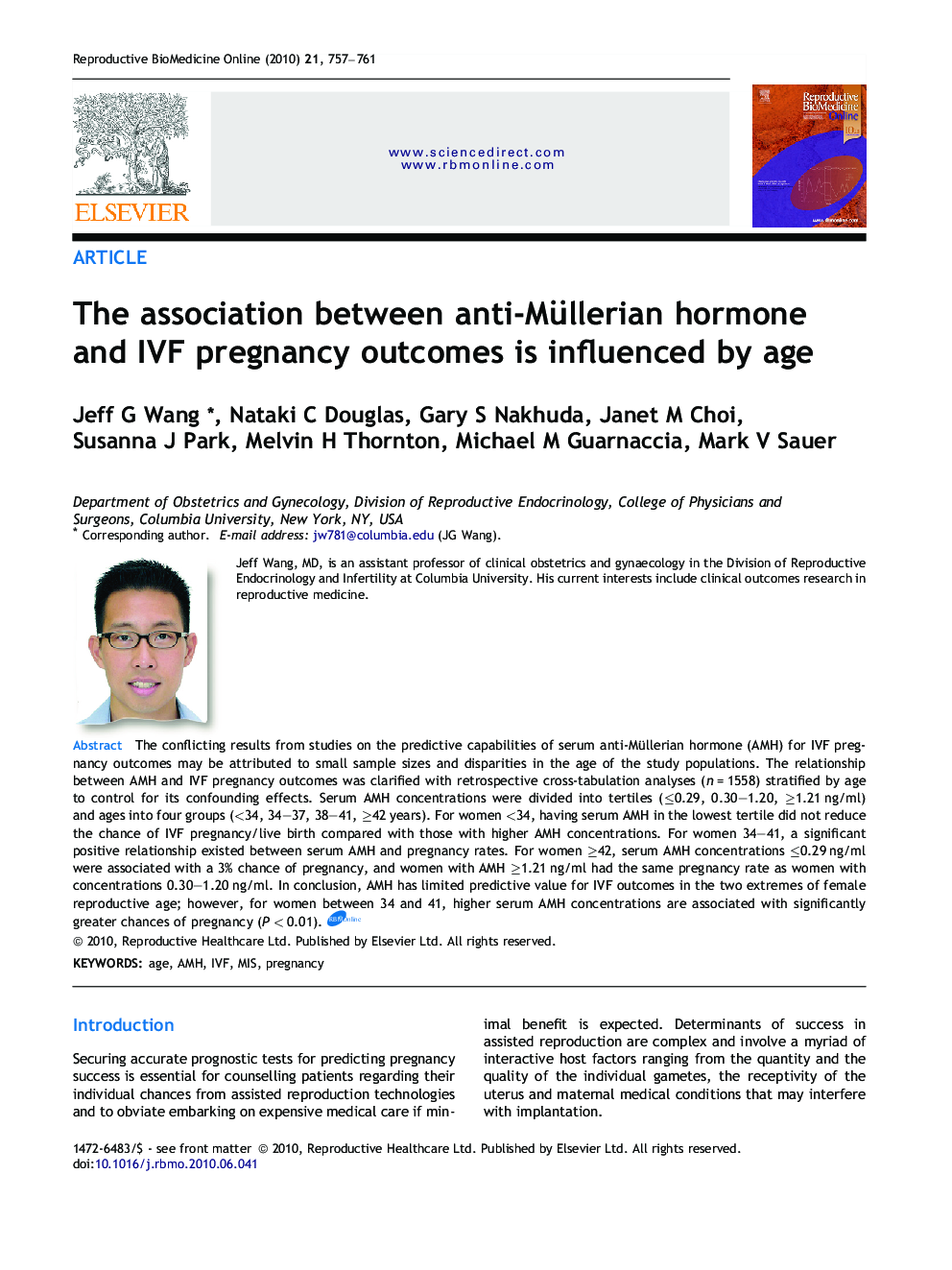| Article ID | Journal | Published Year | Pages | File Type |
|---|---|---|---|---|
| 3971208 | Reproductive BioMedicine Online | 2010 | 5 Pages |
The conflicting results from studies on the predictive capabilities of serum anti-Müllerian hormone (AMH) for IVF pregnancy outcomes may be attributed to small sample sizes and disparities in the age of the study populations. The relationship between AMH and IVF pregnancy outcomes was clarified with retrospective cross-tabulation analyses (n = 1558) stratified by age to control for its confounding effects. Serum AMH concentrations were divided into tertiles (⩽0.29, 0.30–1.20, ⩾1.21 ng/ml) and ages into four groups (<34, 34–37, 38–41, ⩾42 years). For women <34, having serum AMH in the lowest tertile did not reduce the chance of IVF pregnancy/live birth compared with those with higher AMH concentrations. For women 34–41, a significant positive relationship existed between serum AMH and pregnancy rates. For women ⩾42, serum AMH concentrations ⩽0.29 ng/ml were associated with a 3% chance of pregnancy, and women with AMH ⩾1.21 ng/ml had the same pregnancy rate as women with concentrations 0.30–1.20 ng/ml. In conclusion, AMH has limited predictive value for IVF outcomes in the two extremes of female reproductive age; however, for women between 34 and 41, higher serum AMH concentrations are associated with significantly greater chances of pregnancy (P < 0.01).Having accurate tests for predicting the chance of pregnancy through IVF is very important for doctors and patients to make an educated decision about whether to proceed with the treatment. Many medical studies have found that women’s anti-Müllerian hormone (AMH) concentrations in the blood can very accurately predict how many eggs they can produce from taking the injections during IVF treatment. To clearly answer the question whether AMH has the ability to predict IVF pregnancy rates, we looked at the records of 1558 different couples who had completed IVF treatment and divided them into four groups based on the women’s age (<34, 34–37, 38–41 and >42 years). In the youngest age group (<34), women with the lowest AMH blood concentrations did not have pregnancy rates lower than those of women with higher AMH concentrations. For women aged between 34 and 41 years, we observed very clearly that the higher the AMH concentration, the greater the chance of pregnancy during IVF treatment. As for women aged 42 years or older, high AMH concentrations did not result in increased pregnancy rates compared with those of women whose concentrations were only average; however, those women in this age group with very low AMH concentrations had an extremely low chance of success through IVF treatment. Overall, AMH concentration is an important tool to predict IVF pregnancy rates for women aged between 34 and 41 years, but the test is not as useful for younger and older women.
